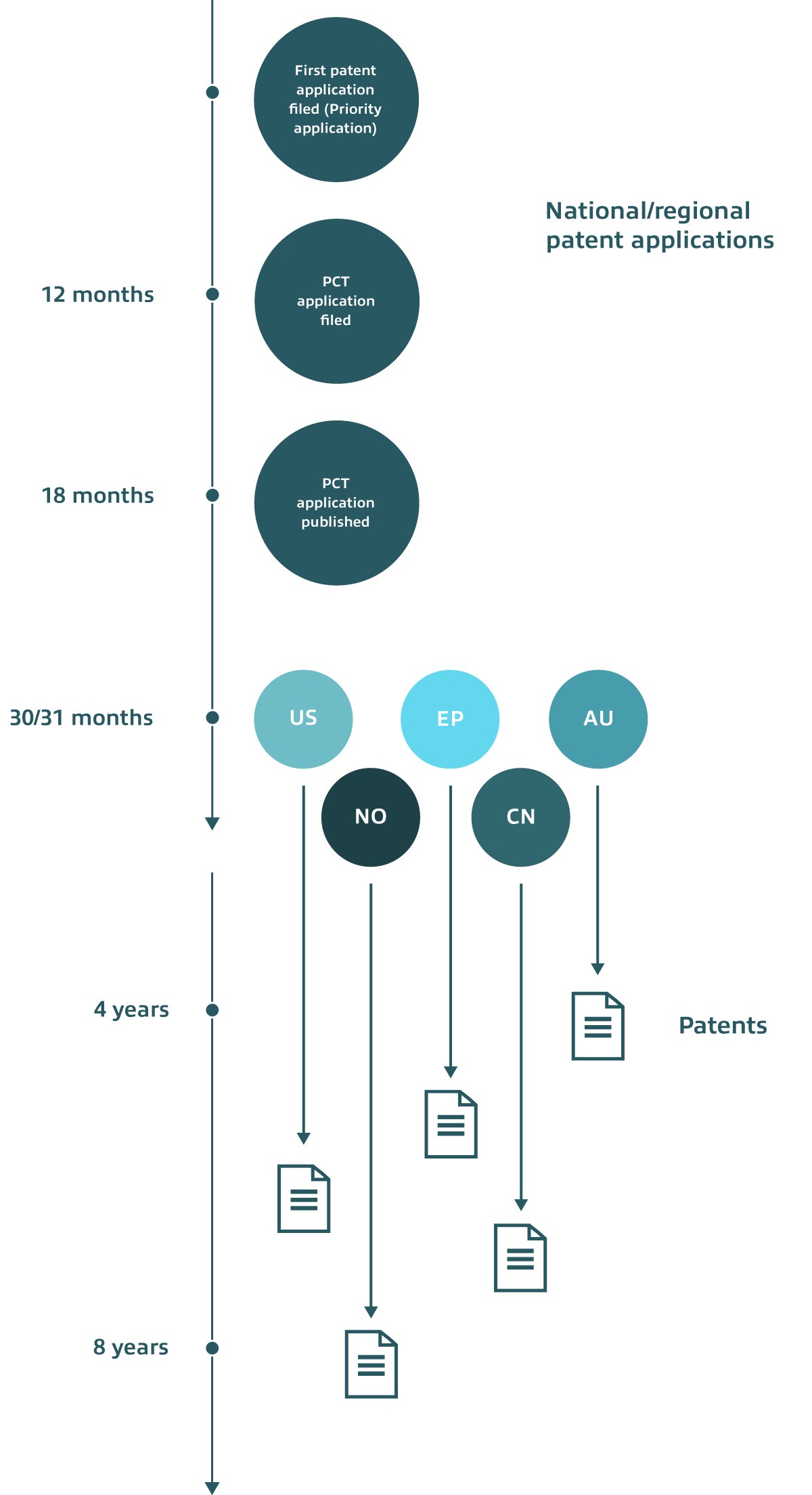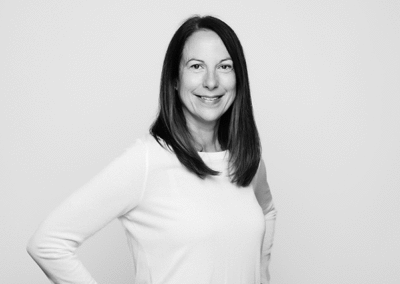We assist with patenting
When you have discovered something new through your research that you believe may have commercial potential, Inven2 is here to help you. Patenting could be one way to protect your invention.
All publicly funded innovation projects should include patent protection in their budget when they apply for funding. This particularly applies to innovation and commercialization grants from the Research Council of Norway, the South-Eastern Norway Regional Health Authority andthe University of Oslo.
Read more about patenting:
Background
The patent system entails a trade between inventors and society, which is tasked with stimulating innovation. Patent applicants can be granted a patent in return for the publication of a detailed description of the invention itself. Had it not been for the patent system, industry would to a much greater extent be based on secrecy.
A patent gives an exclusive right to commercial use of the invention for a maximum period of 20 years. Patents that protect a pharmaceutical with marketing authorisation can be in force for up to 25 years. Once the patent expires, the invention is freely available to all. The patent makes it possible to prevent competitors from exploiting the patented invention for a certain period. This is called patent protection. The patent protection reduces the commercial risk, and is often decisive to succeeding in establishing a company or with licensing on the basis of the invention.
Patent protection is expensive, particularly if the protection is to be valid in many countries. Inven2 will apply for a patent for an invention if the value of the patent protection clearly exceeds the costs. A patent’s value depends on how attractive it is to others to make commercial use of the invention, rather than finding other alternatives or waiting until the patent expires.
Patent criteria
The following conditions must be met in order to be granted a patent:
- There must be an invention.
- The invention must be suitable of industrial application.
- The invention must be novel.
- The invention must have inventive merit.
- The invention shall be disclosed in a manner sufficiently clear as to enable a person skilled in the art to carry out the invention.
The patent system
A patent is a national right. This means that a patent must be applied for and, if relevant, granted in each individual country. The USA is often the biggest market, so a patent protection from this country will often be the most valuable. There are some regional schemes whereby one application is sufficient to be granted a patent in all countries in the same region. The most important region to us is the European Patent Organisation (EPO), of which Norway is also a member.
Both Europe and the USA has a ‘first to file’ system, which means that whoever applies for a patent first is entitled to patent protection for an invention. It does not matter who invented it first.
The first patent application that describes an invention is often called a priority application. ‘Priority’ means that you can wait for up to 12 months after the priority application was filed to apply for a patent in another country and have this application be deemed to have been filed on the same date as the priority application (the priority date). This defers costs and gives patent applicants more time to consider where they want patent protection.
The PCT (Patent Cooperation Treaty) is an international application system that makes it easier to apply for a patent for the same invention in several countries. An international investigative authority carries out an assessment of whether the invention is patentable. When using the PCT system, you can wait for 30–31 months after the first filing date (priority date) before you decide in which countries you wish to apply for a patent. The PCT does not grant patents, however. This is done by the individual country and/or regions.
Typical timeline for Inven2’s patenting process
Inven2 typically files a priority application in the UK, EPO, the USA or Norway. Within 12 months, we file a PCT application based on the priority application if the invention is still deemed to be patentable and of significant value.
The PCT application is published 18 months after the priority date.
Patent applicants can wait 30 months before using the PCT application to apply for a patent in the individual country and/or region. This is called entering into a national phase. In the national phase, the patent applicant and the patent office negotiate in writing on whether the invention is patentable, i.e. whether it meets the five criteria for being granted a patent. This process is very expensive if you have to engage in prolonged negotiations with many patent offices.
If the invention is patentable, the patent applicant is entitled to a patent, but it is not unusual for four to eight years to pass from the priority date until a patent is granted.

Patenting and publishing
Because of the criterion that the invention must be novel, the patent application must be filed before the invention is talked or written about in public. This is an absolute requirement and does not only apply to publication of scientific articles, but all forms of publications, as well as lectures, including titles, summaries/abstracts and posters. It is particularly important to be aware of digital publications. A title and abstract or a poster is often posted digitally far in advance of a conference being held, and this would be considered publication.
The USA has an emergency solution if the inventors have published their invention without filing for a patent first. There, inventors can file a patent application within 12 months of publication and still be granted a patent. Europe does not have this system.
For most commercialisation projects, it would be a disadvantage if the inventors publish their invention during the priority year. If you do, you could miss out on the advantages that apply to the priority year. However, it will usually be completely acceptable to publish the invention after you have filed a PCT application.
Who is the inventor (or inventors)?
Deciding who the inventor (or inventors) is, is a matter of answering the following question: Who invented the invention defined by the patent claims? See detailed guide here.
Inventorship is not intended to acknowledge everyone who contributes to a project, but to identify the people who have provided the actual and qualified intellectual contributions that lead to an invention.
The patent application
A patent application should be written by an experienced patent attorney, and Inven2 cooperates with several patent offices that cover all relevant technical fields.
For the patent attorney to be able to write a good patent application, the inventors must submit a detailed description of conducted experiments and provide a comparison of all relevant data with explanatory texts.
It is also useful to have the inventors’ input on how to define the invention, how broadly it can be protected and which alternatives and variants we should try to cover in the patent claims. If will often be expedient to discuss this with the patent attorney on the phone or in a meeting.
Inven2 always asks the inventors to read through the patent draft before we file it, to ensure that the invention is correctly described. This is important, since there are limited possibilities of changing the text once it has been filed. However, new examples can be added within the first 12 months. The patent claims can be changed during case processing, but only within the wording of the patent description. Consistency of terminology and unambiguous patent claims are therefore very important.
The patent attorney also assists in the case processing of the patent applications until a patent has been granted. Input from the inventors will also often be useful during case processing. This applies in particular to documents, prior art, which is often quoted by the patent authorities as an obstacle to one or more patent claims.
Requirements for patent applications
The patent application must contain a description of the invention and a patent claim that defines the object for which protection is requested through a patent. The wording of the patent application is therefore very important to ensure that you achieve commercially valuable protection.
The patent application must contain a detailed description of at least one way to carry out the invention. One single example can suffice. If the patent claims cover a broad field, the description must include several examples. It may also be important to describe alternative ways of designing the invention that cover the whole area protected by the claims.
It is not necessary to describe the research behind the invention or to know the reason why the invention works.
Each patent claim should specify the factors necessary to achieve the intended effect.
For inventions in chemistry and life sciences, experimental data are often very important to substantiate that the invention will work for the whole scope of the claim. It is difficult to generalise on the basis of one single example in these technological fields.
New experimental data can be added during the first 12 months, i.e. the priority year. If the new data entail an expansion of or change to the scope of protection, this will not have the right to priority from the first filing date. In such cases, publication in the priority year can limit the possibilities of being granted a patent.
You can find more information on the following websites:
- The Norwegian Industrial Property Office: https://www.patentstyret.no/
- IPR-hjelp (Information about intellectual property rights): http://www.iprhjelp.no/no/iprhjelp/
- The European Patent Office (EPO): https://www.epo.org
You can search for published patents on the following websites:
- Espacenet: https://worldwide.espacenet.com/



